What is the most iconic image associated with the United States of America? Is it the starred and striped flag Betsy Ross allegedly sewed? Is it the Golden Arches of McDonald’s, copyrighted as a logo by franchise owner Ray Kroc in the 1960s? Though the Big Mac’s place in history has yet to be determined, some American cultural contributions have been invaluable — not just to the United States, but to the world.
10. The Internet

The idea of a wireless power system — a power system using radio waves or microwaves instead of wires or cables — spans countless countries and several centuries. Serbian-American inventor Nikola Tesla spent from 1891 to 1906 attempting to build what he called a World Wireless System, although his experiment ultimately failed. The idea of creating a wireless power system was shared by many, but the system that’s now called the Internet was invented by two American engineers, Dr. Vincent Cerf and Dr. Robert Kahn.
Cerf and Kahn designed TCP/IP protocals, the techonology that allows wireless power souces to recognize and travel along various networks. They also invented the architectural design for this particular type of wireless power system. Both men have been recognized for their work, receiving the U.S. National Medal of Technology from President Bill Clinton in 1997. In 2005, they received the Presidential Medal of Freedom from George W. Bush. The Presidential Medal of Freedom is the highest honor that can be bestowed on an American civilian.
9. Psychological Realism

Anyone who watches any form of narratively structured entertainment media knows what psychological realism is, even if he or she doesn’t know what it’s called. 19th century Russian theater director Constantin Stanislavski developed a method of acting that emphasized finding motivations for characters’ actions that were realistically staged and supported by what the playwright provided in the script. When Stanislavski’s method became popular in America, American film and theater directors developed method acting, a version of Stanislavski’s method that emphasized how characters’ actions were affected by their personal psychology.
Any film, theatre, or television show made using that approach belongs in the genre of psychological realism. The most famous practitioner of American method acting is arguably Marlon Brando. When Brando was playing a murderer who emerged from an icy lake in the climactic scene of the play Truckline Café, he showed his dedication to method acting by taking several steps to put himself in a psychological state similar to the character’s. Before each performance of that scene, Brando would run up and down stairs until he was panting. Then he would have a stagehand dump a bucket of icy water over his head.
8. Airplanes

Like the idea for the Internet, the idea for a machine capable of taking flight doesn’t belong to any one person or nation. Italian painter and inventor Leonardo da Vinci was drawing plans for flying machines as early as 1488, and his basic design is still used to make contemporary hang gliders. However, the first machines resembling contemporary airplanes were designed by Wilbur and Orville Wright. The brothers jointly owned a bicycle shop where they repaired and designed bikes. They used their knowledge of mechanics and their meticulous observations of birds to perfect the earliest designs for functioning airplanes.
Their planes were the first to be designed with moveable rudders. They also invented the first effective mechanical design for wing warping, giving their planes’ wings the ability to angle during flight, just as birds’ wings do. They took their first successful (for 59 seconds) flight in 1903, in Kitty Hawk, North Carolina. After finalizing their design, they took their first lengthy flight in Dayton, Ohio in 1905. Even after Wilbur died of typhoid fever in 1912, Orville ran the brothers’ joint company, the Wright Company, until 1915. He also taught others how to pilot and design planes.
7. The Twist
Seriously, this dance is a lot more influential than you may immediately think. An American dance craze of the 1960s, the Twist mostly consisted of swiveling one’s hips and moving one’s feet as though putting out a cigarette. The dance originated with a rhythm and blues band called Hank Ballard and the Midnighters. Inspired after watching couples swivel their hips while dancing, Ballard wrote and released a song called “The Twist” in 1958. Unfortunately, the band that invented the dance doesn’t get credit for popularizing the dance craze, since the Midnighters’ lyrics were sexually explicit (by 1950s standards).
Chubby Checker, a clean shaven singer dressed in a suit and tie, performed a another song called “The Twist” on Dick Clark’s American Bandstand in 1960. His demure performance of the dance appeased parents, and the sight of a man swiveling his hips on television enthralled teenagers. Thanks to Checker, the dance became widely popular. Checker himself represented the contrasts that would later define the American counterculture. His respectable self-presentation pleased members of the authoritarian establishment, while the suggestive dance moves he popularized symbolized teenage rebellion.
6. Automobiles
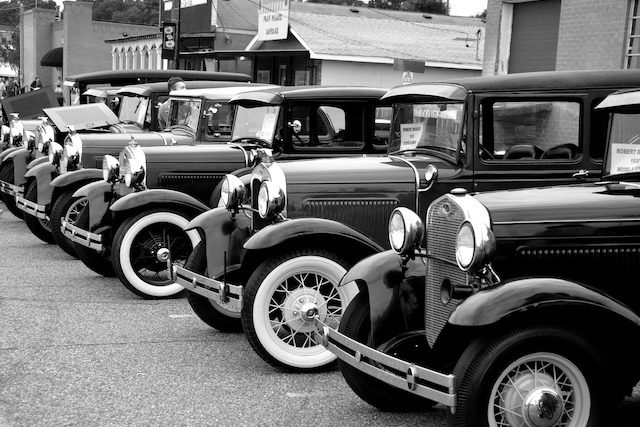
American engineer Henry Ford didn’t design the first fuel-powered car. That honor belongs to German inventor Karl Benz, who patented his design for the Benz Patent Motor Car, a gas-powered vehicle with three wheels, in 1886. When Ford formed the Ford Motor Company in 1902, though, his company started manufacturing the first car models that might be recognizable to a contemporary driver. His 1908 Model-T was so popular that he needed to build many cars within a short time. Because of his need to fill many orders in a timely manner, he invented the assembly line.
On a car assembly line, car parts are placed on a conveyor belt. The employees stand beside the conveyor belt, and each employee repeatedly performs one repetitive task necessary for the building of the vehicle as the items move along the belt. As the person at the end of the belt completes one vehicle, the person at the front of the belt is starting another. Ford also designed interchangeable parts, lowering production costs and making his vehicles easier to repair. Imagine if, for example, a contemporary mechanic could only replace a windshield if he had the right windshield brand for a corresponding vehicle model. Using Ford’s methods, employees decreased the average building time for a car from 12 hours to 2 hours and 30 minutes.
5. Rock ‘n’ Roll Music
Disc jockey Alan Freed allegedly coined the term “rock ‘n’ roll” in 1954, when he titled a radio show where he played rhythm and blues music “The Rock ‘n’ Roll Party.” Based in Cleveland, Freed began hosting Rock ‘n’ Roll Parties in New York City as the word he coined and the music to which it referred steadily gained popularity amongst American teenagers.
Freed was one of the first white entertainers whose career experiences revealed the racism underlying moral objections to rock ‘n’ roll music. ABC canceled his dance television show The Big Beat after Frankie Lymon, the black lead singer for the group Frankie Lymon and the Teenagers, danced with a white woman from the audience during his appearance on the show.
4. The Polio Vaccine
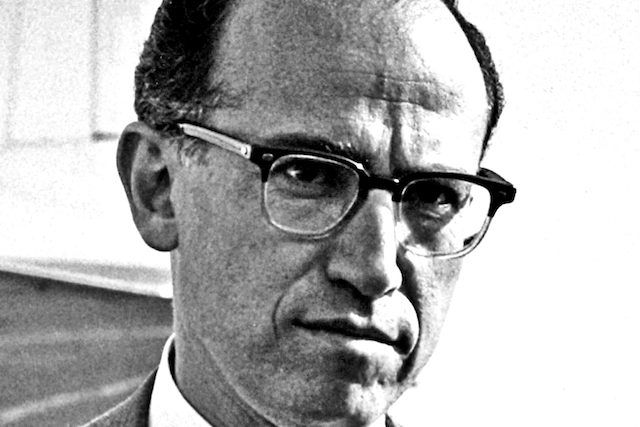
A virus that affects the nervous system, polio may cause permanent paralysis of the limbs or the diaphragm, the muscle that controls breathing. Between two and five percent of those who contract paralytic polio die, and more than half experience permanent paralysis. Since polio is passed by either sharing food or drink, or having skin-to-skin contact, with an infected person, it’s frighteningly easy to contract.
Perhaps the most famous American to contract polio was President Franklin Delano Roosevelt. Though he was permanently disabled after he contracted the virus in 1921, Roosevelt hid his disability and the wheelchair he used as a mobility device from the American public. When Dr. Jonas Salk developed the polio vaccine in 1953, he was so confident in its effectiveness that he injected his wife and his three sons, as well as himself. By 1954, his vaccine was regularly given to schoolchildren. Polio was eradicated from the Western Hemisphere in 1994, though there are still outbreaks in Afghanistan and Pakistan.
3. The Electric Lightbulb
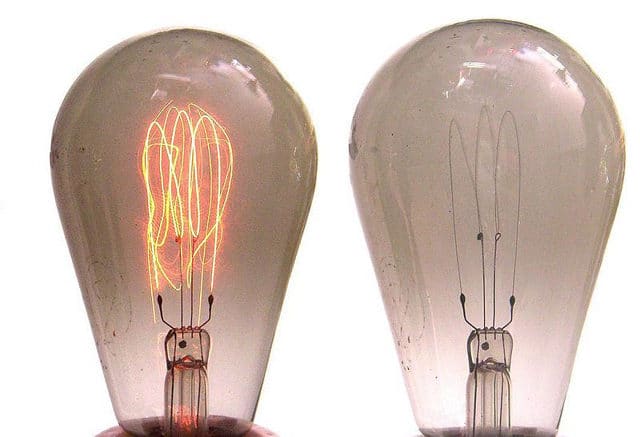
American inventor Thomas Edison acquired 1,093 patents throughout the course of his life, but his most enduring invention is, arguably, the electric lightbulb. Beginning in 1878, Edison experimented with designs for electric lightbulbs that could replace gas-powered lighting systems. Of course, questions about whether or not he should receive credit for the light bulb remain, as in modern times he has developed a reputation (which may or may not be warranted) as a patent-poacher.
Still, by 1880 he had developed an affordable, long-lasting electric lightbulb, using carbonized bamboo instead of filament. Arguably as gifted as a self promoter as he was as an inventor, Edison gained international attention for his invention. His incandescent lighting system was used to light the Paris Lighting Exhibition in 1881 and the Crystal Palace in London in 1882.
2. (Un)common Law
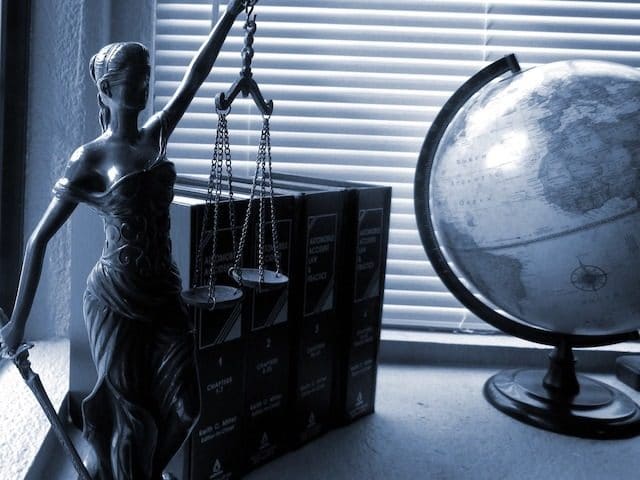
In the Middle Ages, the English developed the practice of making judicial decisions based on common law. Common law is a body of customary law based on past judicial decisions and reports of decided cases. America’s founders were influenced by the tradition of common law, particularly lawyer Sir Edward Coke’s argument that judges must have impeachable reputations if they are to be trusted to interpret legal decisions.
By enshrining certain rights in the Bill of Rights, however, the Founders ensured that the granting of, for example, freedom of speech, freedom of religion, and freedom of the press was not subject to the discretion of judges interpreting common law.
1. Democracy
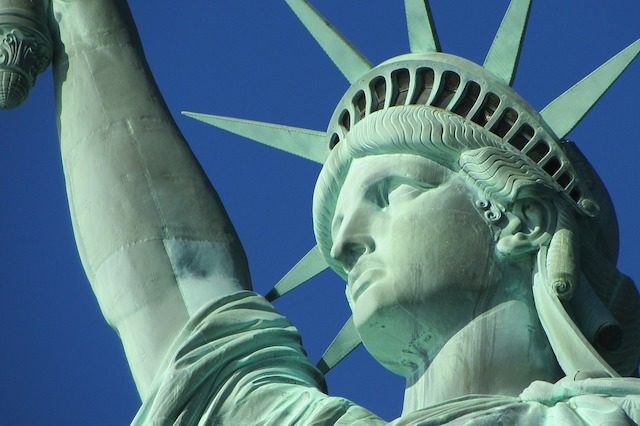
Alright, slow down: we know, America did not invent democracy. That is not what we’re suggesting here, so let’s just be clear about that. Good? Good. Now, let’s get to what our point really is here…
Democracy is a political system wherein the politicians who serve in public offices are elected by the populace. This political system originated in Greece, not America. (See? We told you we weren’t giving America all of the credit!) America isn’t the world’s only democracy, but there are two factors that make its democracy unique. First, America has been a democracy since its founding. Second, America’s commitment to democracy is enshrined in its founding documents. The United States’ Constitution states that the president and members of Congress must be elected by the American people. So while the United States certainly didn’t invent democratic politics, it’s been one of the world’s driving forces in upholding its ideals since the country’s inception.
3 Comments
so I’m a little biased. 🙂 What would you include?
Thank you for taking the time to read it, Claridenbert! I’m a performer,
Interesting article to read though I didn’t expect that a dance move would be on the list.